Getting to Know Plants Class 6 Notes Science Chapter 4
Plants can be categorized into three main groups based on the thickness of their stems and the location of their branches. They are as follows:
1. Herbs
Herbs have thin, green stems and are usually small plants with few branches.
Examples of herbs: Basil, Coriander, Mint, Oregano, Thyme, Parsley, Rosemary, and more.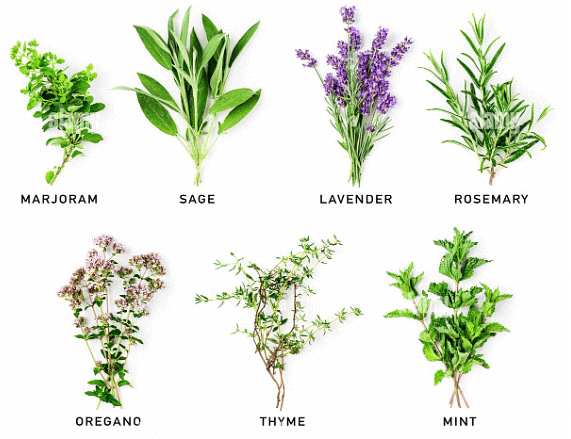 Examples of Herbs
Examples of Herbs
2. Shrubs
- Shrubs are plants with strong but not very thick stems.
- Their branches usually grow from the lower part of the stem.
- These plants are generally taller than herbs but shorter than trees.
 Examples of Shrubs
Examples of Shrubs
3. Trees
Trees are known for their tall height and strong, thick trunks. - Branches of trees usually start growing from the upper part of the tree, rising high above the ground.
Examples of tree: Neem tree, Peepal tree, Coconut tree, Mango tree, and others.
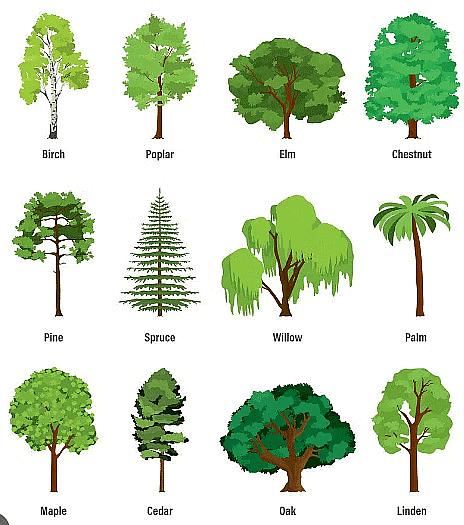 Examples of Trees
Examples of Trees
There are two other kinds of plants which are:
A. Creepers: These are plants that have soft, weak, and green stems and hence cannot stand straight and instead spread on the ground.
Examples of creepers: Sweet Potato, Watermelon, Pumpkin etc.
 Examples of CreepersB. Climbers: These are also plants with soft and weak stems, but instead of spreading on the ground, they take support from a nearby object to climb up.
Examples of CreepersB. Climbers: These are also plants with soft and weak stems, but instead of spreading on the ground, they take support from a nearby object to climb up.
Examples of climbers: Cucumber, Bean, Grapevine, Money-plant etc.
 Examples of Climbers
Examples of Climbers
Step-by-Step Study of Each Part of a Plant
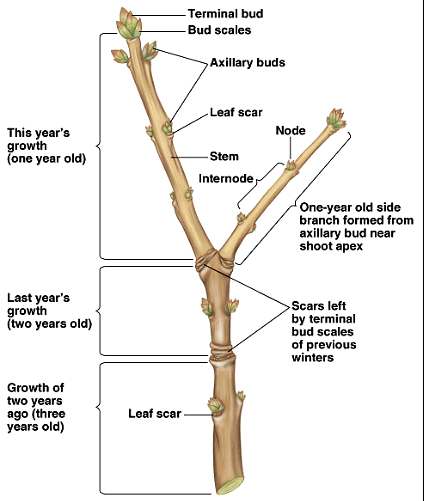 Parts of a Plant
Parts of a Plant
Stem
- The stem has a crucial role in spreading water within the plant.
- It supports branches, flowers, leaves, fruits, and buds.
- While the roots absorb water and minerals from the soil, the stem transports this water upwards to different parts of the plant.
To illustrate this, you can place the plant's stem in a glass of water with colored ink. With time, you'll notice the stem and leaves gradually adopting the ink's color. This demonstrates how the stem moves water across the plant.
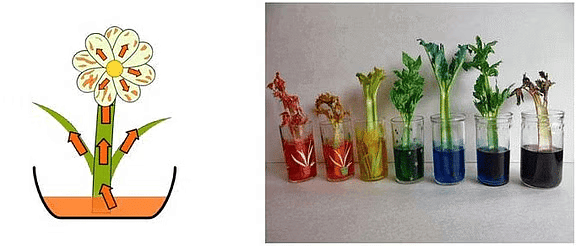
Leaf
- The leaves of plants are majorly responsible for performing two essential functions for the plant’s survival and growth.
- These two functions are called transpiration and photosynthesis.
Transpiration:
- Transpiration is the way plants release extra water into the air. When water moves from the stem to the leaves, some is used for making food, while the extra changes to water vapor because of the sun. This process helps plants cool down.
- Without transpiration, a plant's leaf temperature can't be controlled, possibly causing the plant to die.
- To see transpiration happening, we can seal a leafy plant part in a closed plastic bag and place it in sunlight. After some time, small water droplets appear inside the bag, showing that transpiration has occurred.
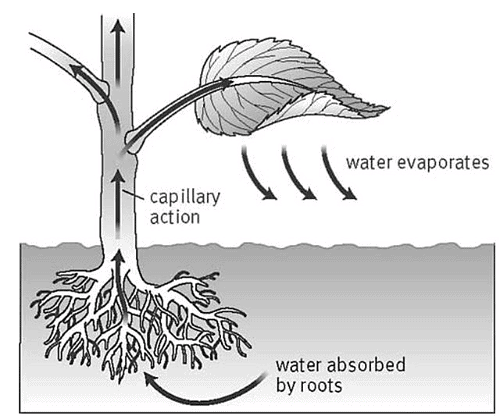
Photosynthesis:
- Photosynthesis is defined as the process that helps leaves prepare food for the plant with the help of carbon dioxide and water.
- Photosynthesis occurs in the presence of the sun and is aided by the presence of a green pigment in leaves called chlorophyll.
- Plants also release oxygen in the process.
- The food prepared is stored in various parts of the plant.
- In the absence of photosynthesis, the plant is unable to utilise the water and minerals to prepare food for its nourishment and gradually dies.
- In order to see if leaves really perform photosynthesis, we take a leaf and immerse it in a test tube filled with spirit.
- We placed this test tube in a beaker filled with water and heated it.
- After the leaf loses its colour, we wash it and pour iodine solution on it, as can be seen below, which shows the presence of starch, thus disproving our doubts.
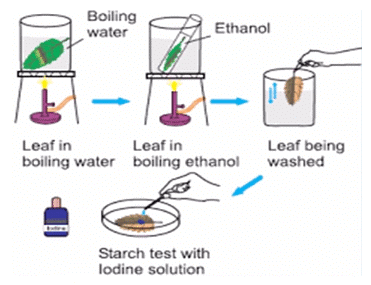 Photosynthesis occurs in Leaves
Photosynthesis occurs in Leaves
Components of a Leaf
Petiole: It serves as the link connecting the leaf to the plant.
Lamina: The expanded and green section of a leaf responsible for photosynthesis.
Veins: These are the numerous lines running across the leaf's surface, collectively forming the leaf venation. Veins serve to transport water and minerals within the leaf.
Midrib: Situated at the leaf's centre, the midrib is a prominent, thick structure that plays a crucial role in supporting the leaf and preventing it from breaking.
 Components of a Leaf
Components of a Leaf
We distinguish between two major types of leaf venation.
- Reticulate venation is said to exist when the veins form a net-like shape on either side of the midrib. This type of venation is seen to exist in dicots like guava and mango.
- Parallel venation is said to exist when the veins run parallel to one another. This type of venation is seen to exist in monocots like banana, wheat, coconut etc.
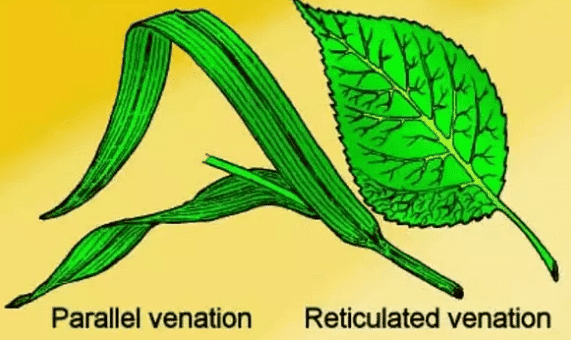 Types of Venation
Types of Venation
Root
The root is a very important component of the plant system, as, without the presence of roots, the plant ceases to exist. This is because the roots perform three major functions essential to the growth and survival of the plant which are:
- Roots are responsible for absorbing minerals and water from the soil and transferring them to the stem. It’s only after the root has transported water and minerals to the stem that the stem becomes capable of transporting these to all parts of the plant.
- Another important function of roots is to firmly anchor the plant in the ground. This is essential to support the upright position of the plants.
- Roots also function by storing important nutrients and food for growth.
There are two major types of roots that exist in plants and these are:

Flower
The flowers are the colourful, seed-bearing parts of the plant that grows at the end of the stem. A typical flower exhibits the following structure:
Petals: These are bright, colourful and broad parts of the flower. Taken together, the petals of the flower form what is called a Corolla.
Sepal: This is the green, leaf-like structure of the flower that encloses the petals and is responsible for protecting the flower when it is in its bud form and supporting it when it is in its bloom stage.
Stamen: These are the long and slender parts of the flower that become visible upon removing the petals and sepals of a flower. Typically, a stamen consists of an anther, i.e. the head of the stamen and a filament, i.e. the long cream-coloured stick. The stamen is also known as the male reproductive part of the plant.
Pistil: This is the innermost part of the flower, typically consisting of a stigma, i.e. the head of the pistil, a style, which is the long sticky part that attaches the stigma to the ovary, i.e. the small and swollen sphere at the base of the pistil. The pistil is the female reproductive part of any flower. The ovary contains small bead-like structures called ovules.
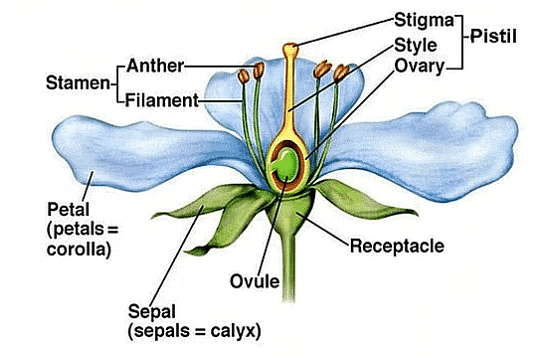 Parts of a Flower
Parts of a Flower
The structure of a flower:
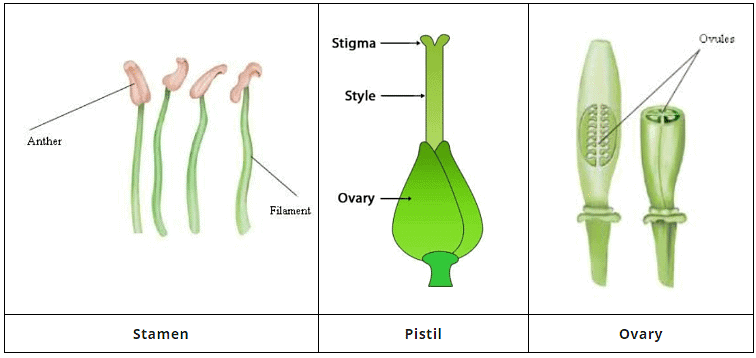
Key Definitions
Stomata: These minuscule, microscopic pores are found on the surface of leaves, facilitating the exchange of gases and the process of transpiration.
Annuals: Plants such as wheat and maize fall into this category, as they undergo their entire life cycle within a single growing season, after which they typically wither away. These are generally herbaceous plants.
Biennials: Plants like carrots and radishes belong to this group, completing their life cycle over the course of two growing seasons.
Perennials: Plants like guava and palm fall into this category. They persist through more than two growing seasons, exhibiting the ability to rejuvenate each spring.
Aerial roots: These roots, as depicted in the image below, are unique in that they grow above ground, in contrast to the typical underground root structures of most plants and trees.
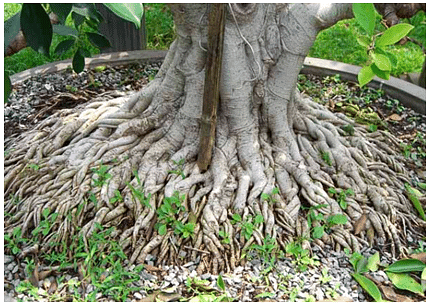 Aerial Roots
Aerial Roots
|
137 videos|271 docs|60 tests
|
FAQs on Getting to Know Plants Class 6 Notes Science Chapter 4
| 1. What are the different parts of a plant? |  |
| 2. How do plants make their own food? |  |
| 3. Why is photosynthesis important for plants? |  |
| 4. How do plants reproduce? |  |
| 5. What are the different types of plants based on their lifespan? |  |

















